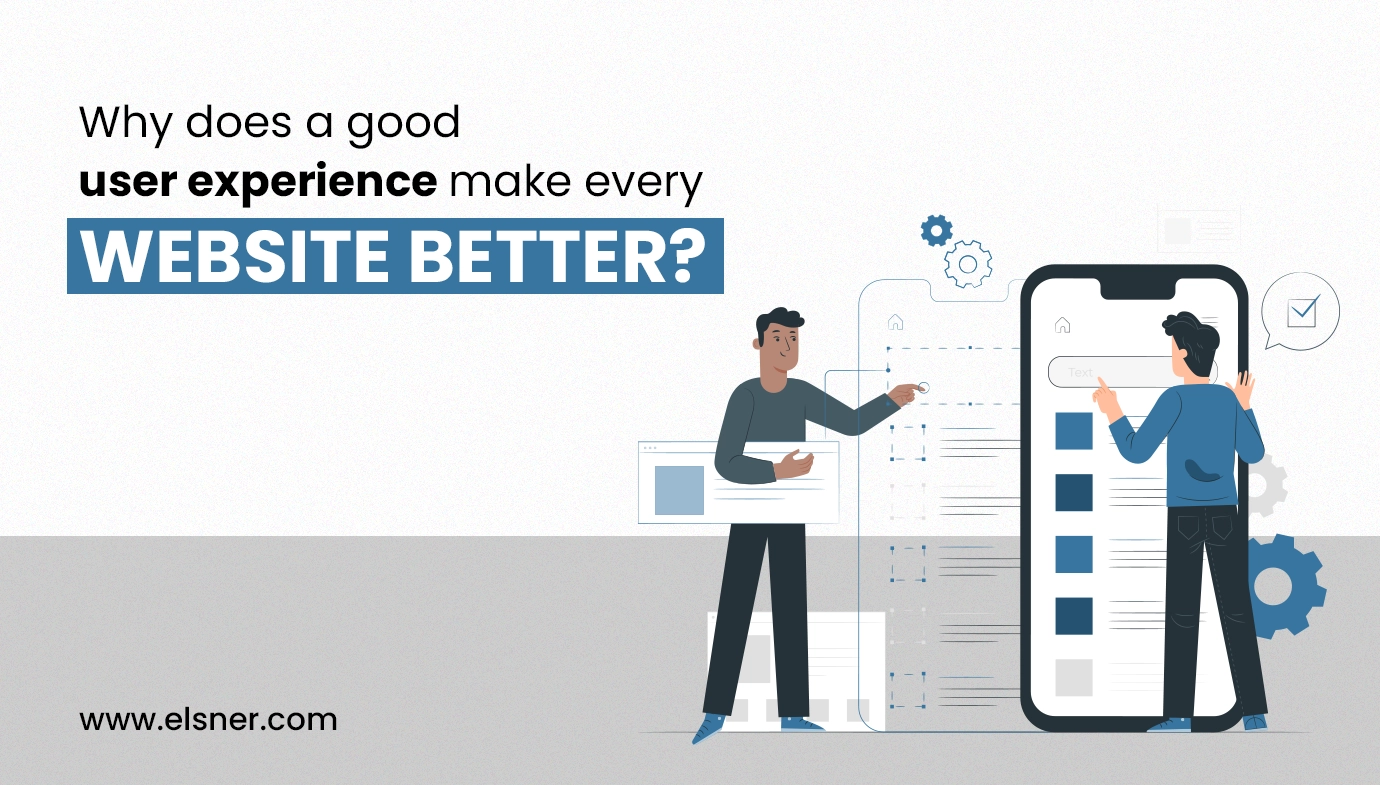Table of Contents
- What is UX design?
- 6 Reasons why user experience matters for your online business
- First impressions are important
- Good UX can improve ROI
- User experience is crucial for SEO
- Increase business efficiency
- Make your brand stand out with great UX
- Retain customers
- What are the key elements that influence UX Design?
- Usefulness
- Learnable
- Desirable
- Credible
- Findable
- Accessible
- Valuable
- Tips for improving your UX design
- Do not try to be TOO different
- Do extensive market research
- Simplicity is the key
- Focus on providing useful content
- Place buttons and icons strategically
- Final thoughts!
The digital landscape is all about battling for user attention and loyalty. In this battle, websites with the best user experience (UX) defeats others. UX is a term that is everywhere these days, from websites, services, and products to landing pages.
But why does UX matter? As it happens, it is really very simple: the better you treat your visitors, the better they treat you back, and the better recommendations they give you.
Websites with a superior user experience can see a conversion rate increase of up to 400%. 94% of first impressions on a website are design-related. Yet when it comes to creating a user-centric website, businesses often overlook things, making them lose customers because of bad UX. If you want to thrive in this highly competitive digital world, we are here to help.
This blog covers every detail you need to know about UX design, including what it is, why it is important, and elements of good user experience. Read on!
What is UX design?
Before getting into the nuances of UX design, let us clarify a few points. Before getting into the nuances of UX design, let us clarify a few points. Every dollar invested in UX brings $100 in return. That’s an ROI of 9,900%. The goal of UX design is to give people an experience that is relevant, efficient, and intuitive. It places a strong emphasis on knowing users, including their requirements, abilities, values, and limitations, to match company objectives.
This umbrella term covers an extensive range of digital touchpoints, from social media and blog marketing campaigns to online product experiences with features like order fulfillment, personalization, online shopping, and customer support. Moreover, UX can include non-digital aspects of the customer experience, such as shipping, instructions, packing, and customer support.
6 Reasons why user experience matters for your online business

First impressions are important
In the competitive market of online businesses, customers have plenty of options. Their decision to stick with a website or stop using it is often made during their initial engagement with it.
A user experience that is both intuitive and pleasing will draw users in and provide a great first impression. On the contrary, bad user experience can turn off visitors even before they have started exploring the website.
Good UX can improve ROI
The goal of any business is to make money. A thoughtful user experience investment can provide a considerable return on investment (ROI). Let’s take an example:
Sharing large files online used to be slow and cumbersome. Dropbox faced competition from email attachments and other file-sharing services. So, Dropbox focused on offering a seamless and user-friendly experience for file sharing and storage. They introduced drag-and-drop uploading, automatic syncing across devices, and a user-friendly interface. Dropbox’s UX improvements led to a 100 million user sign-up within just 4 years of launch.
User experience is crucial for SEO
As a website owner, you want people to interact with and get to your site with ease. When ranking websites, search engines—especially Google—give priority to user behavior and experience. This indicates that you should focus on your site’s user experience (UX), in addition to other SEO tactics.
SEO and UX go hand in hand because effective UX design boosts ranks, improves engagement, and increases traffic. Also, it can significantly improve your website’s conversion rates.
Increase business efficiency
A well-designed user experience (UX) guarantees that users can find what they need, navigate, and complete tasks quickly and effectively. You can achieve this by combining usability testing, design thinking, and user research.
To simplify, a UX designer will try to know what the user wants and their behaviors, build user-centered interfaces that are simple to use and navigate, and test and modify the design time and again.
For example, you are a dentist. If you want to educate your visitors about dentistry, a skilled UX designer would create a content layout that is simple to use and understand. This can entail creating dentistry-related animations, speaking clearly and succinctly in videos, and coming up with eye-catching graphics.
Make your brand stand out with great UX
Effective UX design makes you stand out and makes it easier for people to identify your business. A well-designed user experience (UX) consists of components that support the development of user trust.
A website or app can enhance user experience through many components. Mapping out each of these components to improve the user experience is necessary to have the best possible UX. We will discuss in depth the elements of good user experience further in this blog.
Retain customers

88% of online consumers are less likely to return to a site if a website does not have intuitive navigation and ease of use. Maintaining customers is critical to a business’s return on investment. A high customer retention rate means that your customers are likely to make repeat purchases from you or come back to inquire about your products or services. User experience design plays a significant role in improving customer retention.
The best way to improve UX and retain customers is to ask your customers directly what they want. You can periodically release surveys to know whether they are finding what they need or can navigate your website with ease. With these surveys, you can improve your understanding of consumer behavior and make your business better.
What are the key elements that influence UX Design?

Usefulness
Your website needs to serve a purpose for your intended market. Additionally, the advantages you are offering should reach this target demographic.
For this, taking care of your audience’s needs comes first. If not, why would customers need to download your app, visit your website, or purchase your product?
Learnable
Is it possible for visitors to use your website? When customers first come across the design, they should find it easy to complete fundamental activities.
For this, it will be helpful to use previously established concepts; for example, the menu will be in the upper right corner, a cog symbol will indicate the settings, the logo will be in the upper left corner, etc.
Desirable
Desirability is a multifaceted factor. The user’s social network, advertising, and culture have a great effect on desirability. It is a fundamental need that is probably motivated more by feelings than by logic. For instance, Apple appeals to the user’s emotions with its website’s slick and glossy pictures. Desirability is greatly influenced by branding as well as emotional appeal.
Credible
Credibility is determined by the user’s capacity to have faith in the services you have offered. Not only must it perform as intended, but it also has to last a considerable length of time. Also, the information that comes with it must be accurate and appropriate for the proposed use.
Delivering a great user experience is almost hard if the user believes the person who created the product is deceitful with bad intent.
Findable
Your products, content, and everything on the website should be findable. Your website should be straightforward to use, allowing the user to locate what they need and complete their goal. For example, if your user wants to buy a product, they will usually scroll down the page as the CTA button is generally present at the end.
Accessible
In this context, accessibility refers to the general idea that a user can access and use a website or app regardless of their device (desktop, screen reader, phone, etc.) or skills.
Moreover, in this age of mobile phones, making your website responsive is highly crucial. According to 73.1% of web designers, the leading cause of users leaving a website is a non-responsive design.
Valuable
Ultimately, the product needs to provide value. It must provide value to both the company that makes it and the customer who purchases or uses it. Any product’s early success is likely to be compromised ultimately if it lacks value.
Tips for improving your UX design

Do not try to be TOO different
The majority of websites and mobile applications have a certain type of layout for a reason: it works because users are accustomed to it. That is the psychology of ingrained behavior. Users do not always welcome big changes. For example, if you decide to compile every product on one page, thinking that users will not have to change pages, you might fail. People are used to browsing different categories of products for ease and convenience.
Do extensive market research
The results of market research will be the foundation for UX design. Any attempt to create a good design will fail if the target audience’s likes, preferences, motivations, and goals are unknown.
Simplicity is the key
To begin with, minimalism has been one of the major trends in web design over the past several years and is unlikely to change. Furthermore, eliminating any unnecessary elements results in streamlining the user’s experience.
You want your visitors to follow specific steps and walk through your website in a certain manner. However, they are more likely to give up if they have to navigate a maze to get what they want.
Focus on providing useful content
You can use different types of content like pictures, infographics, articles, animations, videos, and other media. It can assist in giving your visitors the best user experience. For example, you can add a demo video if you have created a new tool. Or you can add 3D images if you own a toy store.
Place buttons and icons strategically
You must allocate a suitable width and spacing for buttons and icons if you want people to be able to click on them, whether you are designing for the web or mobile. This is particularly crucial for mobile devices since users will be interacting on small screens with fingers and might press the incorrect button if numerous are present in close proximity.
Final thoughts!
You should remember that UX design is still mostly an abstract idea. It combines parts of cognitive science, psychology, and individual observations of human behavior with components of standard web design and development. If you think that this is complex work, you can hire a professional for it and take the burden off your shoulders.
Though the process of UX design is, in many respects, somewhat complicated, the end result is straightforward. If you can make a user’s experience fun, they will return often.

Digital Transformation begins here!
Let us write your business’s growth story by offering innovative, scalable and result-driven IT solutions. Do you have an idea that has the potential to bring a change in the world? Don’t hesitate. Share with our experts and we will help you to achieve it.




